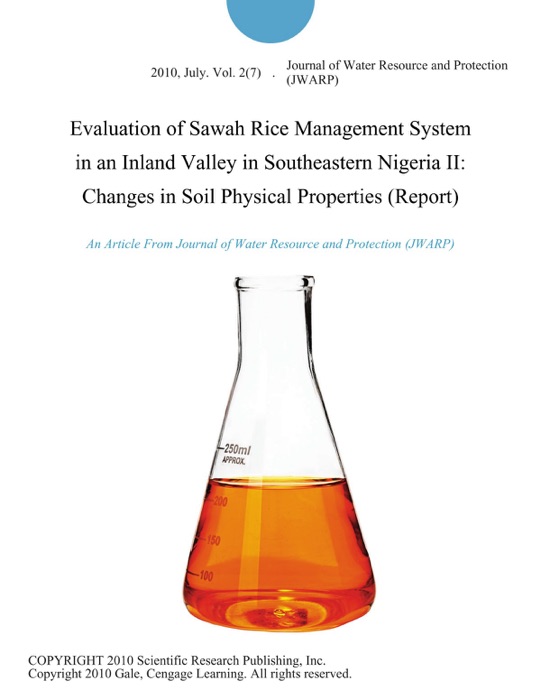(DOWNLOAD) "Evaluation of Sawah Rice Management System in an Inland Valley in Southeastern Nigeria II: Changes in Soil Physical Properties (Report)" by Journal of Water Resource and Protection (JWARP) " eBook PDF Kindle ePub Free

eBook details
- Title: Evaluation of Sawah Rice Management System in an Inland Valley in Southeastern Nigeria II: Changes in Soil Physical Properties (Report)
- Author : Journal of Water Resource and Protection (JWARP)
- Release Date : January 01, 2010
- Genre: Earth Sciences,Books,Science & Nature,
- Pages : * pages
- Size : 239 KB
Description
1. Introduction The term sawah is defined as a leveled rice field surrounded by bunds with inlet and outlet connections to irrigation and drainage canals. It originated from Malayo-Indonesian term 'paddi' which means rice plants. However, the term 'paddy' refers to rice grain with husks in the whole of West Africa. Wakatsuki et al. [1] therefore used the term sawah to distinguish between rice grain with husk, rice field and rice plant. Establishment of effective sawah management system for in- creased rice production in southeastern Nigeria involves the manipulation of certain soil physical properties in form of ecological engineering works. This manipulation of soil physical properties may involve deep earth movement and tillage to achieve a better topographic setting and optimal soil physical condition. Wakatsuki and Masunaga [2] remarked that ecological engineering of the inland watershed by the local people are required to increase agricultural productivity. These techniques according to them include leveling, bonding, and construction of canals and head dykes. Most soils in the West African sub-region are highly weathered and very fragile [3-7]. Mbagwu [4] reported that physical degradation of soils in the tropics resulted from soil erosion by water and mechanical land clearing using bulldozers. Lal [8] and Mbagwu et al. [9] showed that this degradation was manifested in high bulk density, low total and macro porosity, reduced water infiltration and transmission rate and low water retention and available water capacity within the root zone.